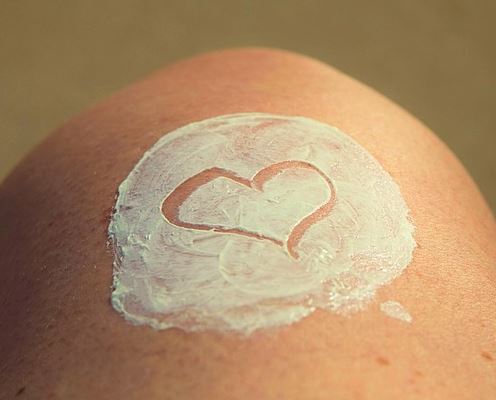What does skin do?
Human skin, the outer covering of the body, is the biggest organ in the human body. Additionally, it constitutes the first line of defense. The skin comprises many specialized structures and cells. It’s divided into three major layers viz. epidermis, dermis, and hypodermis. Each layer provides a different function in the overall function of the epidermis.
Because it interfaces with the surroundings, skin plays an integral role in protecting (the body) against germs and excess water loss. Its other functions include insulation, temperature regulation, sensation, storage, and absorption of vitamin D by action of ultraviolet (UV) and the protection of vitamin B folates, absorption of oxygen and drugs, and water resistance. Skin that is severely damaged will try to form scar tissue and heal itself. This is often stained and depigmented.
What are common skin disorders?
Skin disorders vary greatly in severity and symptoms. They can be temporary or permanent and can be painful or painless. Some have situational causes, while others could be genetic. Some skin conditions are minor, and many others may be life-threatening. Some of the common skin conditions are given below.
1. Acne (Acne vulgaris): Acne, the most common skin disease in the U.S., is a source of stress for each teen. Additionally, the prevalence of acne is increasing in adults, also. Acne is caused by blocked hair follicles and oil (sebaceous) glands of the skin, often triggered by hormonal fluctuations. The term acne describes not just pimples on the face, but blackheads, cysts, and nodules also. Some people can get acne on other parts of the body also, like the chest and back. Acne is most common among teenagers, even though it affects individuals of all ages.
Effective remedies are available, but acne can be persistent. The pimples and bumps heal slowly, and when one starts to go away, others seem to crop up. Depending on its seriousness, acne can cause psychological distress and scar the skin. The sooner you start treatment, the lower your risk of these issues. There’s scientific evidence that adopting a low glycemic load diet and preventing milk significantly prevents and improves acne vulgaris. One literary post attributed a substantial growth of acne in people who consume the “Western diet” to high glycemic foods and cow’s milk. The common belief that chocolate leads to acne remains unclear.
2. Atopic dermatitis (Eczema): Atopic dermatitis is one of the most frequent kinds of eczema found in children. The specific cause of atopic dermatitis isn’t known, but researchers believe it could involve genetics, the environment, or the immune system. Atopic dermatitis can appear on the face (especially in infants), hands, feet, or at the creases and folds of skin. Dry, itchy, and scaly skin is the standard, and continuous scratching may result in a thickened area. While eczema frequently occurs in people with allergies, allergies don’t cause eczema.
Atopic dermatitis (eczema) is a condition that makes your skin red, itchy, and can occur at any age – though it’s most common in children. Atopic dermatitis is long-lasting (chronic) and tends to flare occasionally. It might come with asthma or hay fever. No cure has been found for atopic dermatitis. But remedies and self-care measures can alleviate itching and prevent new outbreaks. It will help to avoid harsh soaps, moisturize your skin regularly, and apply medicated creams or lotions.
Mothers who choose probiotic supplements during and following pregnancy lower the chance of atopic dermatitis within their infants. Probiotics are available in fermented dairy products, such as yogurt. Vitamin A and vitamin D deficiencies can lead to atopic dermatitis.
3. Psoriasis: Psoriasis speeds up the life cycle of skin cells and is a common skin condition. It induces cells to build up quickly on the surface of the skin. The excess skin cells form scales and red patches which are itchy and sometimes painful.
Psoriasis Is a chronic disease that often goes and comes. The main objective of treatment is to block the skin cells from growing so fast.
You can manage psoriasis through lifestyle changes, like moisturizing, stopping smoking, and reducing stress. Weight loss can significantly improve psoriasis symptoms. There is evidence that alcohol ingestion is highly related to psoriasis. Diet and lifestyle modifications to reduce weight with holistic therapies can help. Unfortunately, there is no cure for psoriasis.
4. Vitiligo is a disorder that causes the loss of skin color in blotches. The extent and speed of color loss from vitiligo are unpredictable. It is also unpredictable wherein the body will affect the skin – it can affect any part of the body. It might also have an effect on hair and the interior of the mouth.
Normally, the color of hair and skin is determined by melanin. Vitiligo occurs when the cells which produce melanin expire or stop working. Vitiligo affects people of all skin types, but it might be more evident in people with darker skin. The condition isn’t life-threatening or contagious. It may be stressful or make you feel bad about yourself.
Treatment for vitiligo may restore color to the affected skin. But it doesn’t prevent continued loss of skin color or a recurrence. While there is no officially prescribed “vitiligo diet,” the very best nutritional steps which you can take include eating a healthy diet full of good nutrients and drinking a great deal of water. And, just like any autoimmune disease, you may benefit from resistant system-boosting foods that contain phytochemicals, beta-carotene, and antioxidants.
What is conventional treatment for skin disease?
The common drugs for topical use include:
1. Antibacterials: These medications, such as Bactroban or Cleocin, are often used to treat or prevent disease
2. Anthralin (drithocreme, micanol, and many others ): Although not frequently used, these help to reduce inflammation and can help treat psoriasis
3. Antifungal agents: Lamisil, Lotrimin, and Nizoral are several examples of common topical antifungal drugs used to treat skin conditions like ringworm and athlete’s foot
4. Benzoyl peroxide: Creams and other products containing benzoyl peroxide are used to treat acne
5. Coal tar: This topical therapy is available with and without a prescription, in strengths ranging from 0.5% to 5%. Coal tar is used to treat ailments including seborrheic dermatitis (generally in shampoos) or psoriasis. Currently, coal tar is rarely used because it may be slow-acting and can cause severe staining of personal clothes and bedding
6. Corticosteroids: These are used to treat skin conditions such as eczema and come in several forms such as foams, lotions, ointments, and lotions
7. Retinoids: These medicines (like Retin-A and Tazorac) are gels or lotions derived from vitamin A and are used to treat ailments including acne
8. Salicylic acid: This medicine is available in the form of lotions, gels, soaps, soaps, and stains. It needs to be used sparingly as placing too much on the body at once can lead to toxicity. Salicylic acid is the active ingredient in many skin care products for treating psoriasis and acne.
Natural treatments for skin diseases
Natural drugs from the plants are gaining popularity due to several advantages such as frequently having fewer side-effects, better patient tolerance, being less expensive, and acceptable because of a long history of usage. Besides herbal medicines offer rational means for treating several diseases that are stubborn and incurable in different systems of medicine. For these reasons, many plants have been investigated for the treatment of skin ailments which range from itching to skin cancer. Till 2012, 31 plants are reported to work in various skin diseases during the past 17 years (1995-2012) of study work. Some good herbal remedies include:
– Aloe Vera: One top herbal remedy for treating skin issues is aloe vera. It’s been widely known as a plant with extraordinary curing capacities. Aloe Vera, in its pure form, is used as a skin softener and moisturizer. The gel, which is the fluid inside the leaves, has been used for centuries to accelerate wound healing. It not only enhances healing but also functions as a topical pain reliever. Some reliable studies demonstrated aloe vera to be quite helpful in treating psoriasis, a relatively common condition that leads to itchy, red scaly patches on skin and scalp.
– Amica: Topical preparations of Arnica flower are particularly useful for wound healing. It’s effective as an analgesic (pain reliever), antiseptic, and anti-inflammatory cream. It is valuable in speeding the healing of insect bites, for soothing joint pain, and simple skin abrasions. Germany has approved the use of arnica for wound healing treatment.
– Calendula: Also referred to as the common marigold, Calendula flower has a long record of efficacy in treating bruises, wounds, skin infections, cuts, and rashes. Germany’s health authorities have approved its use for topical treatment of wounds that are healing poorly and for certain kinds of skin ulcers. Compresses made with calendula tea can also be helpful. The tea can be utilized as a mouth wash to deal with painful lesions in the mouth.
– Chamomile: Chamomile has been used for centuries for the treatment of various medical issues. Chamomile tea has been used for healing as an oral rinse to treat gingivitis, minor upset stomach, debilitating mouth lesions, wound healing, itchy lesions, hives, and sunburn.
– Capsaicin: Commonly called cayenne, this hot red pepper was used for many health problems like high blood pressure, stomach ulcers, poor circulation, skin, and lung infections. Several formulas combine capsaicin along with other herbal products to optimize antibacterial and anti-inflammatory consequences. Capsaicin has been shown in many research studies to be an effective pain reliever. Originally the pain may be raised, or there might be a burning sensation due to the discharge of substance-P, which is usually temporary.
– Comfrey leaf: Comfrey’s leaves and roots have been used for centuries to increase the healing of bruises and cuts. Besides, it has been useful as an anti-inflammatory for the treatment of migraines. It’s believed to promote healing of closed cracks when applied on the skin over the website of injury. The tea produced from the comfrey leaf can also be useful but shouldn’t exceed three cups every day.
– Tea tree oil: The tea tree is an evergreen tree found in Australia and Asia. The leaves are used for centuries as an antiseptic and were used in World War I as a disinfectant. More recently, the oil in the leaves has been chosen to treat cuts, insect bites, and other common skin problems. The oil has been proven to kill both fungus and bacteria. and can be diluted as necessary for a variety of conditions. Tea tree oil may be poisonous and should not be taken orally.
Precautions & side effects
Herbal remedies vary significantly in their security class evaluations. As an example, some are consumed as foods and have high safety ratings, whereas others are highly biologically active and poisonous and must be used very carefully. There are lots of potential drug interactions with prescription and herbal drugs. It’s a must for individuals to share information about what herbs, supplements, and other over-the-counter remedies they’re taking or applying with their doctor.







